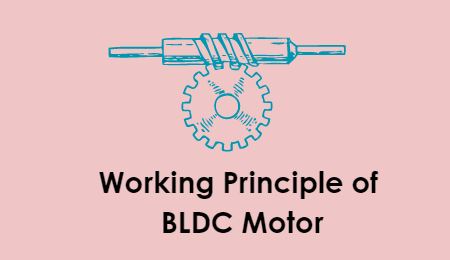The creation of effective motor technologies is essential in today’s technologically evolved world for a variety of applications, from electric automobiles to industrial machines. The Brushless Direct Current (BLDC) motor is an example of a very great invention. BLDC motors offer excellent efficiency, a small size, and little maintenance needs in contrast to traditional motors. We shall examine the internal structure, operating principles, and benefits of BLDC motors as we dig into their working theory in this article.
What is an BLDC Motor?
Understanding a BLDC motor’s fundamental structure and parts is the first step in comprehending how it operates. A rotor, stator, and electronic control module make up a BLDC motor. Permanent magnets are found in the rotor, while several coils, also known as windings, are uniformly spaced throughout the stator and the rotor of the motor.
In Many Parts of BLDC Motor There,
- Electromagnetic Induction ( इलेक्ट्रोमैग्नेटिक इंडक्शन)
- Commutation Process (रूपान्तरण प्रक्रिया)
- Hall Effect Sensors (हॉल इफ़ेक्ट सेंसर)
- Phases of BLDC Motor (बीएलडीसी मोटर के चरण)
Electromagnetic Induction
To comprehend the operation of a BLDC motor, we must first grasp the concept of electromagnetic induction. This phenomenon, discovered by Michael Faraday, describes the generation of electricity when a conductor moves through a magnetic field or when the magnetic field around a conductor changes.
Commutation Process
Unlike conventional motors, BLDC motors employ a different commutation process. Instead of using brushes and a commutator, BLDC motors rely on electronic commutation for switching the coil energization. The electronic control unit, often integrated with a microcontroller, plays a vital role in deciding the sequence in which the coils are energized.
Hall Effect Sensors
Hall effect sensors are commonly used in BLDC motors to determine the position of the rotor with respect to the stator. These sensors produce electrical signals that the electronic control unit uses to synchronise the energization of the coils, resulting in the motor operating smoothly and precisely.
Phases of BLDC Motor
BLDC motors can be categorized into two primary types based on the number of phases: 3-phase and single-phase BLDC motors. The 3-phase BLDC motor is widely used due to its balanced performance and smooth operation, whereas single-phase BLDC motors are simpler and primarily used in low-power applications.
Working Principles of BLDC Motor
The operation of a BLDC motor can be divided into three phases: starting, energizing, and commutation.
Starting Phase
During the starting phase, the electronic control unit applies a sequence of electrical pulses to the motor windings, creating a rotating magnetic field. This rotating field interacts with the rotor’s permanent magnets, initiating motion in the motor.
Energizing Phase
Once the motor starts rotating, the electronic control unit continues to apply pulses to the motor windings, constantly changing the polarity to ensure a smooth and continuous rotation. The energizing phase enables the motor to generate torque and increase its speed.
Commutation Phase
The commutation phase is critical in maintaining the proper sequence of coil energization. The hall effect sensors detect the rotor’s position and send signals to the electronic control unit, instructing it to switch the current flow to the appropriate coil. This ensures that the rotor continuously aligns with the rotating magnetic field, allowing for optimal motor performance.
Advantages of BLDC Motors
BLDC motors offer numerous advantages compared to conventional motors, making them highly sought after in various applications. Some notable advantages include:
- Higher Efficiency: BLDC motors eliminate the energy losses associated with brushes, resulting in increased efficiency.
- Reduced Maintenance: The absence of brushes reduces the wear and tear, enhancing the motor’s durability and reducing maintenance requirements.
- Compact Size: BLDC motors are more compact and lightweight, making them ideal for applications with limited space.
- Speed Control: BLDC motors offer precise speed control due to their electronic commutation system, allowing for better performance in various scenarios.
- Enhanced Reliability: BLDC motors have a longer lifespan and higher reliability, making them suitable for critical applications.
Conclusion
In conclusion, the working principle of a BLDC motor revolves around the concept of electromagnetic induction and electronic commutation. These motors offer numerous advantages, such as enhanced efficiency, reduced maintenance, and compact size. With their growing popularity in various industries, BLDC motors continue to revolutionize the world of motor technologies, paving the way for a greener and more efficient future.

